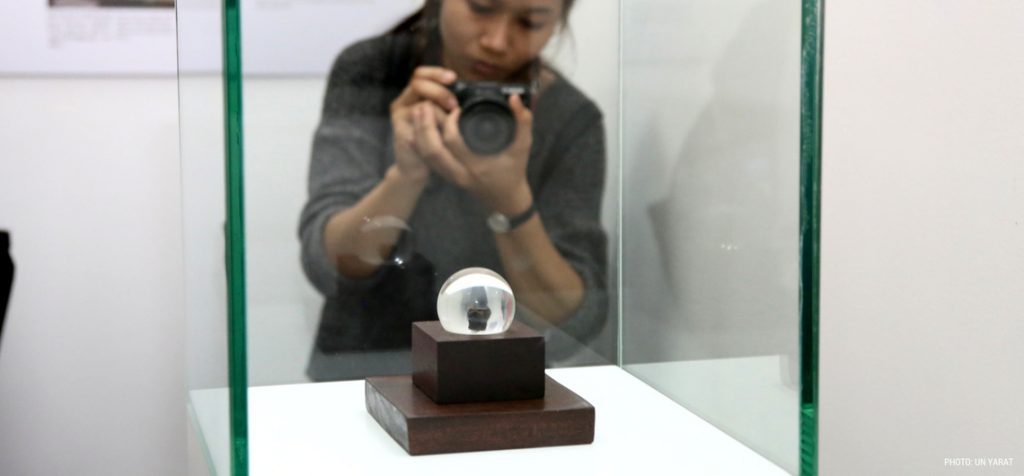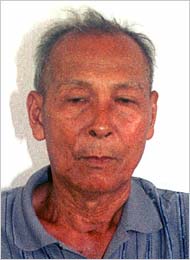On July 16, 1993, Christian Science Monitor published a story titled ‘UN Peacekeeping Effort Breaking Down in Cambodia‘.
On July 16, 1997, The New York Times quoted a UN source claiming “At least 40 political opponents (mainly FUNCINPEC), have been executed and hundreds of others arrested…..
”We are discovering new things pretty quickly,” said the official, who spoke on condition of anonymity. ”So we would expect the numbers to be substantially higher.” The official listed a number of specific incidents — places, dates and circumstances — of people who had been killed. Some had been shot while trying to surrender, and others were found gagged, with eyes gouged out or with rope marks on their wrists.”
On July 16, 2008, Thai police and angry villagers blocked nationalist Thai protesters on Thursday from reaching the disputed ancient temple of Preah Vihear on the country’s border with Cambodia. The 900-year-old Preah Vihear temple had been a source of tension for decades since the International Court of Justice ruled in 1962 that it belonged to Cambodia.
The latest flare-up was triggered by Bangkok’s support for the UNESCO heritage listing which anti-government groups said was tantamount to selling out Thailand’s heritage.
On July 17, 1942, the ‘Umbrella War’ began after aa Buddhist monk named Hem Chieu was arrested while still retaining his priest status on a charge of preaching anti-French doctrine. Hem Chieu and fellow monk Nuon Duong were arrested – Hem Chieu was sentenced to death, which was later commuted to life imprisonment.

On July 17, 1945, the formation of a Cambodian militia was announced in the official (French-language) newspaper, Cambodge. It was estimated the strength of the Cambodian militia was around 3,000 men, roughly equivalent to the number of Japanese posted to Cambodia. Hardly any of these were armed. A History, quotes the militia’s leader as saying, “I am convinced that myself and my compatriots are the best Cambodian troops because we have been chosen among the intellectuals”.
On July 17, 1968, the landing craft LCU 1577 entered Cambodia waters after a navigation error on the Mekong and was captured by the Cambodian Navy. 11 U.S. servicemen and 1 South Vietnamese on board were later released on December 23.

On July 17, 1970, Sihanouk’s ‘Seventh Message to the Nation’ was broadcast by illicit radio stations.
On July 17, 1989, the Law on Marriage and Family was passed during the 17th ordinary session of the first legislature.
On 18 July 2011, the International Court of Justice issued its decision on the Preah Vihear crisis between Cambodian and Thai forces- ordering both countries to withdraw troops immediately from the temple and the contested surrounding areas. The ICJ’s decision included a map which flagged a provisional demilitarised zone. The court asked both sides to cooperate with ASEAN, in particular by allowing Indonesian observers into the demilitarised zone. On the same day, the Thai government handed Cambodia a letter from Prime Minister Samak Sundaravej insisting Thai troops were deployed on Thai soil. In a letter to Hun Sen, the Thai PM said Cambodian troops and buildings on the disputed 4.6 km2 (1.8 sq mi) area were a “violation of Thailand’s sovereignty and territorial integrity”, but that his government was “resolved to seek a just and peaceful solution to the situation.”
On July 18, 1995, the Law on the Press was passed during the fourth session of the first legislature
On July 18, 2012, the government of Cambodia in an unprecedented step issued orders to close all schools due to the outbreak of a deadly virus. WHO and the Cambodian government said that lab tests confirmed that the Enterovirus 71 (E-71)- a virulent strain of hand, foot and mouth disease- had killed at least 60 young children.
On July 19, 1958, Beijing and Phnom Penh established official diplomatic relations after Cambodia recognized the legitimacy of the People’s Republic of China and rejected Taiwan’s claims of independent statehood.
On July 19, 1973, a month before the U.S. ceased bombing Cambodia as part of “Operation Freedom Deal,” an expansion of the Vietnam War and Cambodian Civil War, U.S. Ambassador Emory Swank presented Cambodia’s piece of the ‘Friendship Moon Rock’ to the country’s education minister, Keo Sangkim, in an official ceremony.
The 1.142-gram rock, embedded in a clear lucite sphere, was gifted on a wooden plaque with the flag of the nation that was flown to the moon on Apollo 17.
“The program and gift that your excellency has just given to the Khmer people is a symbol of the sincere desire of the United States of America to promote peaceful cooperation among the nations of Earth in order to achieve eternal peace on our planet in general, and a stable peace in Southeast Asia, in particular, a peace to which the Khmer people aspire,” wrote Lon Nol, the then self-proclaimed president of the coup-founded Khmer Republic, in a letter to Nixon in July 1973 (translated from French).
“Also, you can rest assured that we will keep the present gift of the great people of United States of America as the most precious gift we have ever received,” wrote Nol. The moon rock was lost and re-discovered in 2018.

On July 19, 1997, following the bloody political violence of July 6, an ASEAN Troika team comprising Foreign Minister Ali Alatas, Foreign Affairs Secretary Domingo Siazon of the Philippines, and Thailand’s Foreign Minister Prachuab Chaiyasarn met Prime Minister Hun Sen and other Cambodian leaders to mediate and break the impasse.
On July 19, 2013, opposition leader Sam Rainsy returned to Cambodia from France after being granted a royal pardon on July 12, 2013.
On 20 July, 1941, the Cambodia national anthem Nokoreach‘ was adopted. It was removed in 1970, but appeared again from1975-1976,
before being re-adopted on September 21 1993.
On July 20,1954, the Geneva Peace Accord was signed. Article One stated:
As from twenty-third July 1954 at 0800 hours (Pekin mean time) complete cessation of all hostilities throughout Cambodia shall be ordered and enforced by the Commanders of the Armed Forces of the two parties for all troops and personnel of the land, naval and air forces under their control.
On July 20, 1954, Chinese foreign minister Zhou Enlai and Cambodian Foreign Minister Tep Phan held talks to discuss the results of the Geneva Accord.
Zhou Enlai and Tep Phan discuss the Vietnamese proposal for conflict resolution. The Cambodian side discusses issues on which they agree with the Vietnamese (that the Vietnamese will not be discriminated against in Cambodia, that there will be no combatant personnel in Cambodia, etc.) and
issues on which they disagree (military issues, Viet Minh withdrawal timetable, etc.). Zhou expresses hope that these issues will be resolved in an upcoming meeting with the Vietnamese, and that he will do what he can to assist in the resolution. FULL TRANSLATION
On July 21, 1975, almost 300 Cambodian refugees were gunned down by Khmer Rouge soldiers as they attempted to cross the border into Thailand.
On July 21, 2006, Chhit Choeun, aka Nguon Kang, but better known as Ta Mok, known as “The Butcher”, died of heart failure before appearing in front of the Khmer Rouge court tribunal. His heart complications were said to be caused by the stress of the upcoming trial, and he died in a military hospital after falling into a coma aged 81 or 82.

On July 21, 2008, Cambodian Defence Minister Tea Ban and Thai Army commander Boonsrang Niempradit held talks over the crisis at Preah Vihear in Thailand. The talks achieved no outcome.
On July 22, 1970, South Vietnamese troops ended their military offensive against communist rebels and North Vietnamese troops in Cambodia. Some 3,000 communist soldiers and 313 South Vietnamese soldiers were killed during the intervention.
On July 22, 1993, Cambodia attended the 26th ASEAN Ministerial Meeting (AMM) in Singapore as a special guest of the host country.
On 22 July 2003, a working party report was adopted, allowing Cambodia to join the World Trade Organization.
On July 22, 2008, Thailand rejected the assistance of ASEAN in resolving the border dispute. Thailand’s statement came as ASEAN foreign ministers began a meeting in Singapore. The BBC reported that Cambodia had requested UN assistance in resolving the border dispute. The previous week the Cambodian government denied it had made such a call after similar news stories were published.
On July 22, 2014, Mu Sochua was freed from Prey Sar Prison, after the CPP and CNRP reached an agreement to end their political dispute. She was arrested for violence that took place at Freedom Park on July 15, 2014.

On July 21, 2022, CNE stopped publishing.